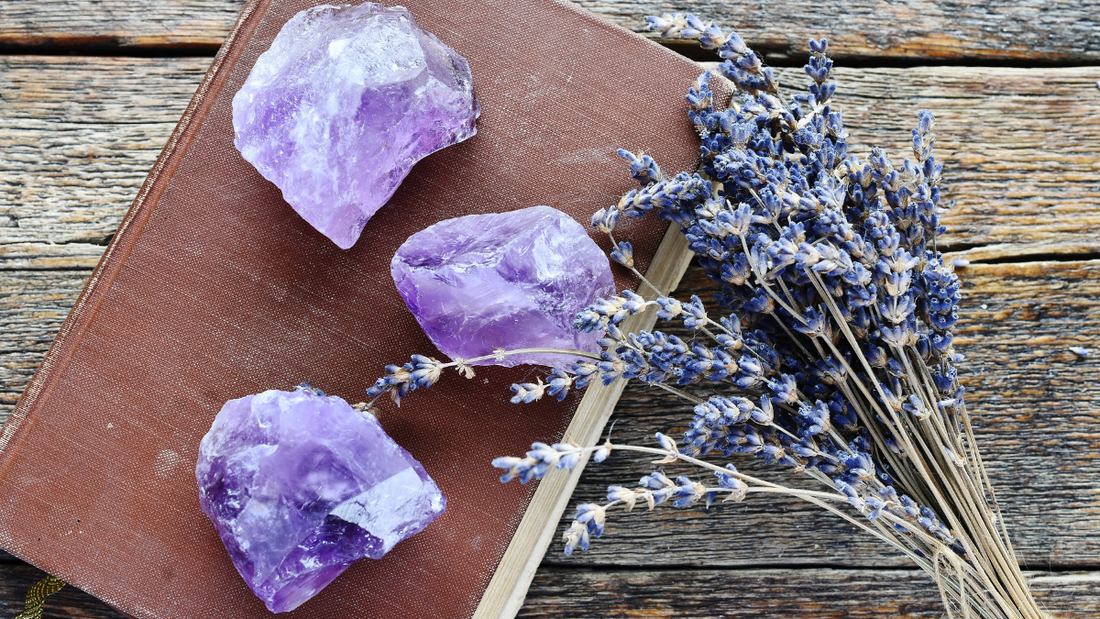
February Birthstone Guide: The Amethyst
Share
What Is the February Birthstone?

The February birthstone is the amethyst; many people love this semi-precious gemstone for its purple hue. It’s also the gemstone for 6th and 17th wedding anniversaries.
What Are the Characteristics of the February Birthstone?
According to Geology.com, amethyst first begins turning purple during crystal growth. Small amounts of iron “are incorporated into a growing quartz crystal” (“Amethyst”). Then gamma rays, discharged by radioactive materials within the host rock, brighten the iron, resulting in the purple color.
How deep the purple is can vary from one part of the crystal to another depending on how much iron is in the crystal during the different stages of the crystal growth. The darker the purple, the more iron was deposited (“Amethyst”).
What Is the History of the February Birthstone?
The word amethyst comes from the Greek word amethystos, translating, roughly, as to “not intoxicate.” The Ancient Greeks believed the amethyst protected its owner from drunkenness and would use it to create wine goblets (“Amethyst”).
French poet, Remy Belleau, actually created a myth about the amethyst in a poem. In this poem, Bacchus, the god of intoxication, wine, and grapes, desired a woman by the name of Amethyste; however, she did not desire him back. Amethyste wanted to remain chaste. So she prayed to the gods to help her. The goddess Diana answered her prayer by transforming Amethyste into a white stone.

Bacchus was so overcome by Amethyste’s desire to remain chaste, he poured wine over the stone as an offering, dying the crystals purple.
It wasn’t just the Greeks who valued amethyst, however. The Egyptians used amethyst to create engraved gemstones called intaglio engraved gems. These were intricately carved gemstones that were considered very luxurious (“Amethyst”).
In medieval Europe, soldiers wore amethyst amulets to protect themselves in battle because they believed amethyst healed people and kept them level-headed.
Anglican Bishops wear an Episcopal ring often set with an amethyst; this is “an allusion to the description of the Apostles as ‘not drunk’ at Pentecost in Acts 2:15” (“Amethyst”).

The color purple, itself, is a royal color. Therefore, in the Middle Ages, amethyst was used to decorate English regalia (“Amethyst”).

In Ancient China, they used it to remove negative energies. And Tibetans consider amethyst to be sacred to Buddha and make prayer beads from it (“Amethyst”).
What Are the Purported Metaphysical Properties of the February Birthstone?
Some believe that the amethyst has many healing properties, including
- Physical: The amethyst can improve the immune system, reduce headaches, and promote better sleep.
- Mental: The amethyst can alleviate worries and fears, encourage clear thinking, and help you trust your intuition.
- Emotional: The amethyst promotes emotional balance and spiritual growth.
To find your perfect amethyst gemstone jewelry, just visit StyleDots.com today!
Learn more about birthstones in our Birthstone Guide.
This is an update to an article previously published on February 15, 2023.



